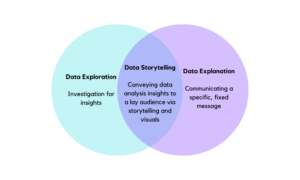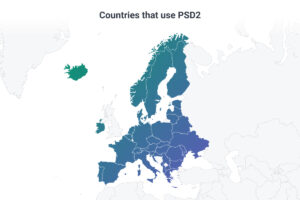
The modern finserv customer has high expectations. Accustomed to the ease of mainstream consumer services, they expect the same levels of experience to be replicated across their financial services journeys.
The success of these consumer interactions can be attributed to two key factors. Firstly, the provision of a true omnichannel offering – giving customers the freedom to choose how and when to engage with their provider. Secondly, and arguably most important of all, the ability to personalise experiences across each channel.
The problem is that many financial services providers are simply not geared up to deliver such a level of customer experience (CX). FinServ businesses have always relied on the ‘human touch’ in customer relationships – such as face-to-face meetings – and replicating these interactions, at scale, in today’s digitally evolved landscape is no mean feat.
However, with research telling us that 71 percent of customers expect personalisation and 76 percent will get frustrated when they don’t find it, organisations cannot afford to remain static.
Data must do the heavy-lifting
Research from Forrester shows that personalisation can help banks to deliver a superior CX. By tailoring communication and offerings to individual customers, finservs can demonstrate that they understand their customer base – fostering trust and loyalty in the process.
The delivery of this ‘superior CX’ relies on organisations’ ability to personalise interactions throughout the entire customer lifecycle and across the full spectrum of physical and digital channels. To succeed, finservs must break out of technical and organisational silos and move away from managing fragmented customer channels.
While the industry’s reputation for expertise and experience remains its primary strength, firms now need to incorporate data-driven insights into their customer engagement and investment strategies to fully understand, anticipate and respond to customer-specific needs.
Personalisation in practice
If financial services organisations want to better engage with their customers, they need to connect individual data points and build an omnichannel view of the customer which transgresses multiple systems or business units and can be personalised to meet individuals’ specific needs. They need to ensure advisors are equipped with this real-time insight to improve the overall impact and effectiveness of any subsequent physical interactions.
Creating such a comprehensive view of the customer is a prerequisite for providing the best possible experience, no matter where, when or how customers choose to interact.
There are five key actions financial services organisations can take to truly offer a personalised CX:
- Identify and unlock data across all customer touchpoints
- Stitch data together to create an omnichannel view
- Visualise how customers interact with the brand
- Identify areas of opportunity
- Orchestrate real-time, individualised experiences
By operationalising all available customer data – whether it’s from call centre transcripts, chat logs or a customer’s journey on its website – financial services organisations can build a complete view of the customer. It is by looking at this entire journey that they can more effectively – and positively – influence a customer’s onward journey with the brand, identify new opportunities for engagement and reward loyalty with further tailored experiences.
When finservs take a more personal approach, they ensure that customers feel heard – strengthening emotional ties and contributing to overall success. Such personalisation comes with its own financial rewards. In fact, McKinsey found that “companies that grow faster, drive 40 percent more of their revenue from personalisation than their slower-growing counterparts.”
Get ready for hyper-personalisation
Having a comprehensive view of customers’ interests, context and intent, is essential to businesses that hope to gain insight into their customers and then act swiftly on this information.
In the next ten years, it is expected that the nature of advice and the way it is delivered and consumed will fundamentally change to being data-driven, hyper-individualised and continuous.
Industry knowledge, expertise and relationship management skills will still be instrumental to successful finserv businesses; but leading brands will need to find the optimal combination of technology and ‘the human touch’ to deliver a fully rounded and insightful customer experience.
- SEO Powered Content & PR Distribution. Get Amplified Today.
- PlatoData.Network Vertical Generative Ai. Empower Yourself. Access Here.
- PlatoAiStream. Web3 Intelligence. Knowledge Amplified. Access Here.
- PlatoESG. Automotive / EVs, Carbon, CleanTech, Energy, Environment, Solar, Waste Management. Access Here.
- PlatoHealth. Biotech and Clinical Trials Intelligence. Access Here.
- ChartPrime. Elevate your Trading Game with ChartPrime. Access Here.
- BlockOffsets. Modernizing Environmental Offset Ownership. Access Here.
- Source: https://www.finextra.com/blogposting/24895/the-value-of-personalisation-to-todays-finserv-customer?utm_medium=rssfinextra&utm_source=finextrablogs
- :has
- :is
- :not
- :where
- $UP
- 40
- a
- ability
- across
- Act
- actions
- advice
- advisors
- All
- always
- an
- and
- anticipate
- any
- approach
- ARE
- areas
- arguably
- AS
- At
- available
- away
- Banks
- base
- BE
- being
- BEST
- Better
- brand
- brands
- Break
- break out
- build
- business
- businesses
- but
- by
- call
- CAN
- cannot
- centre
- change
- Channel
- channels
- Choose
- combination
- comes
- Communication
- complete
- comprehensive
- Connect
- consumed
- consumer
- context
- continuous
- contributing
- create
- customer
- customer data
- Customer Engagement
- customer experience
- Customers
- CX
- data
- data points
- data-driven
- deliver
- delivered
- delivery
- demonstrate
- digital
- digitally
- do
- Dont
- drive
- each
- ease
- effectively
- effectiveness
- engage
- engagement
- ensure
- Entire
- equipped
- essential
- evolved
- expect
- expectations
- expected
- experience
- Experiences
- expertise
- fact
- factors
- faster
- feat
- feel
- financial
- financial services
- Find
- Finextra
- FinServ
- firms
- five
- For
- Forrester
- fostering
- found
- fragmented
- Freedom
- from
- frustrated
- full
- full spectrum
- fully
- fundamentally
- further
- Gain
- geared
- get
- Giving
- Grow
- Have
- heard
- help
- High
- hope
- How
- HTTPS
- human
- identify
- Impact
- important
- improve
- in
- incorporate
- individual
- industry’s
- influence
- information
- insight
- insightful
- insights
- instrumental
- intent
- interact
- interactions
- interests
- into
- investment
- IT
- ITS
- journey
- Journeys
- jpg
- Key
- knowledge
- landscape
- leading
- Level
- levels
- lifecycle
- looking
- Loyalty
- Mainstream
- management
- managing
- many
- Matter
- McKinsey
- mean
- Meet
- meetings
- Modern
- more
- most
- move
- multiple
- must
- Nature
- Need
- needs
- New
- next
- no
- now
- of
- offer
- offering
- Offerings
- omnichannel
- on
- opportunities
- Opportunity
- optimal
- or
- Organisations
- out
- overall
- own
- percent
- personal
- Personalised
- physical
- plato
- Plato Data Intelligence
- PlatoData
- points
- possible
- primary
- Problem
- process
- provider
- providers
- providing
- provision
- ready
- real-time
- relationship
- Relationships
- remain
- remains
- replicated
- reputation
- research
- Respond
- revenue
- Reward
- Rewards
- same
- Scale
- Services
- Shows
- silos
- simply
- skills
- specific
- Spectrum
- Still
- strategies
- strength
- strengthening
- subsequent
- succeed
- success
- successful
- such
- superior
- swiftly
- Systems
- tailored
- Take
- Technical
- Technology
- telling
- ten
- than
- that
- The
- their
- then
- These
- they
- this
- throughout
- Ties
- to
- today’s
- together
- true
- truly
- Trust
- two
- understand
- units
- us
- value
- View
- want
- Way..
- Website
- when
- whether
- which
- will
- with
- years
- zephyrnet













